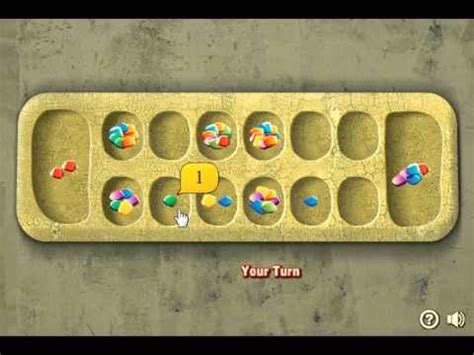Welcome to our strategic chess blog! In this post, we will delve into the art of chess tactics and explore various strategies to help you emerge victorious on the chessboard. From strategic opening moves and counting and tracking the seeds to keeping your opponent off balance and creating traps and forced moves, we will cover it all. We will also discuss the importance of endgame tactics and how they can lead you to a triumphant finish. So, whether you’re a seasoned player or just starting out, get ready to sharpen your skills as we uncover the secrets to success in chess.
Strategic Opening Moves
The strategic opening moves in a game of chess can often set the tone for the rest of the match. These initial moves are crucial in establishing control over the board and positioning your pieces for future attacks. By carefully planning your opening moves, you can gain an advantage over your opponent and increase your chances of winning.
One of the key objectives in the opening phase of a chess game is to establish a strong presence in the center of the board. This is where your pieces can exert maximum control and have the greatest mobility. Controlling the center not only allows you to launch attacks in multiple directions but also provides a solid foundation for your future moves.
Another strategic opening move is to develop your pieces efficiently. This involves bringing your knights, bishops, and other pieces out from their initial positions and into more active and influential spots on the board. By doing so, you increase the number of options available to you and increase your flexibility in responding to your opponent’s moves.
In addition to controlling the center and developing your pieces, it’s also important to protect your king during the opening phase. This can be achieved by castling, a move that involves moving your king to safety by tucking it behind a wall of pawns and activating your rook. Castling not only provides a secure haven for your king but also brings your rook into a more active position.
- List of strategic opening moves:
- Controlling the center
- Developing your pieces
- Protecting your king through castling
| Strategic Opening Moves |
|---|
| 1. Control the center |
| 2. Develop your pieces |
| 3. Protect your king through castling |
By implementing these strategic opening moves, you can establish a solid foundation for the rest of the match and gain an advantage over your opponent. Remember, chess is not only a game of skill, but also a game of strategy. So before you dive into complex tactics and combinations, invest your time and energy in mastering the art of strategic opening moves. Happy playing!
Counting and Tracking the Seeds
In the game of chess, counting and tracking the seeds can be a crucial strategy for players looking to gain an advantage over their opponents. Seeds refer to the individual pieces on the chessboard, and by keeping a close eye on their movements, players can anticipate their opponent’s next moves and plan their own strategies accordingly. This is particularly important in the opening phase of the game, where each move can set the tone for the rest of the match.
One key aspect of counting and tracking the seeds is understanding the value and importance of each piece on the board. The pawn is the most common and abundant piece, and while it may initially seem insignificant, it can play a pivotal role in helping to secure victory. Pawns are often used as decoys or distractions to draw out more valuable pieces, so keeping track of their movements can provide valuable information for planning your own strategy.
Similarly, the rook, knight, and bishop are also key pieces to watch closely. The rooks and bishops, with their ability to move across multiple squares in a single move, can exert significant control over the board and pose serious threats to your own pieces. Meanwhile, the knights, with their unique L-shaped movement, can often make unexpected and surprising attacks on vulnerable pieces. By counting and tracking these pieces, you can anticipate their potential threats and adjust your own moves accordingly.
Counting and tracking the seeds also involves keeping an eye on your opponent’s movements. Pay attention to how they position their pieces and try to deduce their overall strategy. Are they focusing on a particular area of the board? Are they setting up traps or preparing for a major offensive? By observing their moves and patterns, you can gain valuable insights into their intentions and adjust your own strategies to counter their plans.
- Keep an eye on the pawns and anticipate their potential threats
- Track the movements of the rooks, knights, and bishops for potential attacks
- Observe your opponent’s moves and deduce their overall strategy
| Piece | Value |
|---|---|
| Pawn | 1 |
| Rook | 5 |
| Knight | 3 |
| Bishop | 3 |
By counting and tracking the seeds, chess players can gain a deeper understanding of the game, identify potential threats, and plan their moves strategically. Whether you’re a beginner or an experienced player, this practice can greatly enhance your gameplay and give you an edge over your opponents. So, next time you sit down for a game of chess, remember the importance of counting and tracking the seeds to pave your way to victory!
Keeping Your Opponent Off Balance
When it comes to playing a strategic game like chess, one of the most important tactics to master is keeping your opponent off balance. This means constantly surprising them with your moves and forcing them to constantly adapt to new situations. By doing so, you can gain a psychological advantage and increase your chances of winning the game.
One effective way to keep your opponent off balance is by using strategic opening moves. These are the initial moves you make at the beginning of the game and can set the tone for the rest of the match. By choosing unexpected and unconventional opening moves, you can catch your opponent off guard and put them on the defensive right from the start. This can disrupt their planned strategy and force them to reconsider their moves.
Another way to keep your opponent off balance is by counting and tracking the seeds. Seeds are the potential threats or opportunities that exist on the chessboard. By keeping track of these seeds and constantly reassessing the board, you can make more informed decisions and surprise your opponent with unexpected moves. This forces them to constantly adjust their strategy and prevents them from settling into a comfortable rhythm.
Creating traps and forcing moves is yet another powerful technique to keep your opponent off balance. By setting up situations where your opponent has limited options, you can force them into making unfavorable moves or falling into traps. This places them in a reactive position and allows you to dictate the flow of the game. It’s important to always be aware of possible traps and to constantly evaluate the board to capitalize on any opportunities that arise.
Lastly, having a solid understanding of endgame tactics is crucial for keeping your opponent off balance. The endgame is the final stage of the game when there are fewer pieces on the board. It is during this phase that being unpredictable and tactically sharp can make all the difference. By studying and practicing various endgame tactics, such as zugzwang or king and pawn endgames, you can keep your opponent guessing and increase your chances of securing victory.
In conclusion, keeping your opponent off balance is a key strategy in chess. By employing strategic opening moves, counting and tracking the seeds, creating traps and forced moves, and mastering endgame tactics, you can disrupt your opponent’s strategy and gain a psychological advantage. Remember, being unpredictable and adaptable is essential to staying one step ahead on the chessboard.
Creating Traps and Forced Moves
Creating Traps and Forced Moves
Creating traps and forced moves is a crucial aspect of strategic gameplay in various board games. By setting up cunning traps and forcing your opponent into unfavorable moves, you can gain a significant advantage and increase your chances of victory. This tactical approach requires careful planning, anticipation, and the ability to think several moves ahead. In this blog post, we will explore effective strategies for creating traps and forcing your opponent into making moves that ultimately benefit your position.
One effective strategy for creating traps is to start by exerting pressure on your opponent’s pieces. By putting their pieces in precarious positions, you force them to respond and potentially make mistakes. This can be done by controlling critical squares on the board, threatening their key pieces, or creating tactical threats that require immediate attention. By doing so, you manipulate your opponent’s options and limit their ability to execute their desired moves.
Another way to create traps is by utilizing the concept of forks and pins. A fork occurs when one piece attacks two or more enemy pieces simultaneously, forcing the opponent to choose which piece to save. By presenting your opponent with an unfavorable decision, you can exploit the situation and gain a material advantage. Similarly, a pin occurs when a piece is indirectly attacked but is unable to move due to the adverse consequences of leaving another valuable piece exposed. Mastering these tactical maneuvers can greatly enhance your ability to create traps and forced moves.
Endgame Tactics for Victory
When it comes to chess, the endgame is often the most critical phase of the game. It is the point where both players have fewer pieces on the board, and every move carries significant weight. In order to secure victory, players must employ strategic endgame tactics. These tactics involve leveraging the remaining pieces to create advantageous positions, force concessions from the opponent, and ultimately secure a checkmate. In this blog post, we will explore some key endgame tactics that can lead to victory.
One important endgame tactic is King and Pawn Endgame. In this scenario, both players have only their kings and a few pawns left on the board. The key to success in this situation often lies in promoting a pawn to a new queen. Players must carefully calculate their moves to advance the pawn while avoiding stalemate or losing it to the opponent. This tactic requires strategic positioning of the king to support the pawn’s promotion and defending it from the opponent’s attacks.
Another effective endgame tactic is Opposition. The Opposition refers to the specific positioning of the kings, where they face each other with an odd number of squares between them. This allows the player to control key squares on the board and restrict the opponent’s king’s movement. By maintaining the Opposition, players can limit the opponent’s options and create vulnerabilities that can be exploited for victory.
Zugzwang is yet another powerful endgame tactic. The term Zugzwang, which translates to “compulsion to move,” refers to a situation where any move a player makes weakens their position. This tactic forces the opponent into a disadvantageous position, where every move leads to further deterioration. By using Zugzwang, a player can force their opponent into making unfavorable moves, creating opportunities for an advantageous checkmate.
- King and Pawn Endgame
- Opposition
- Zugzwang
| Tactic | Description |
|---|---|
| King and Pawn Endgame | Strategic positioning of remaining pawns to promote to a queen. |
| Opposition | Controlling key squares by maintaining a specific positioning of kings. |
| Zugzwang | Forcing the opponent into disadvantageous moves. |





